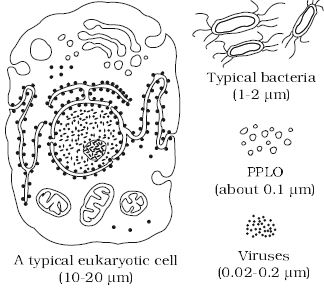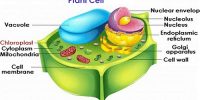The prokaryotic cells are represented by bacteria, blue-green algae, mycoplasma and PPLO (Pleuro Pneumonia Like Organisms). They are generally smaller and multiply more rapidly than the eukaryotic cells (Figure). They may vary greatly in shape and size. The four basic shapes of bacteria are bacillus (rod like), coccus (spherical), vibrio (comma shaped) and spirillum (spiral).

The organization of the prokaryotic cell is fundamentally similar even though prokaryotes exhibit a wide variety of shapes and functions. All prokaryotes have a cell wall surrounding the cell membrane. The fluid matrix filling the cell is the cytoplasm. There is no well defined nucleus. The genetic material is basically naked. not enveloped by a nuclear membrane. In addition to the genomic DNA (the single chromosome/circular DNA), many bacteria have small circular DNA outside the genomic DNA. These smaller DNA are called plasmids.
The plasmid DNA confers certain unique phenotypic characters to such bacteria. One such character is resistance to antibiotics. In higher classes, you will learn that this plasmid DNA is used to monitor bacterial transformation with foreign DNA. The nuclear membrane is found in eukaryotes. No organelles, like the ones in eukaryotes, are found in prokaryotic cells except, for ribosomes. Prokaryotes have something unique in the form of inclusions.













